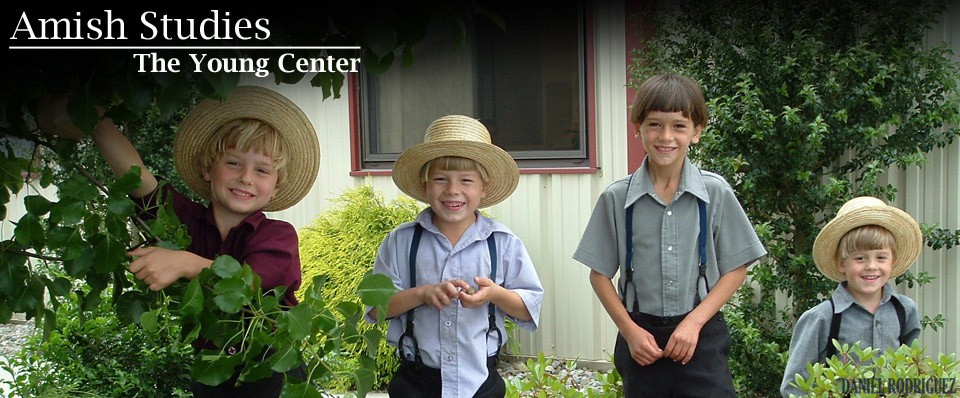Beliefs
 The Amish endorse basic Christian beliefs, but their spirituality has been shaped by their interpretation of the Bible as well as several written sources. In addition to Luther’s German Bible, the Martyrs Mirror, the Ausbund, and the Dordrecht Confession of Faith are key sources for their beliefs.
The Amish endorse basic Christian beliefs, but their spirituality has been shaped by their interpretation of the Bible as well as several written sources. In addition to Luther’s German Bible, the Martyrs Mirror, the Ausbund, and the Dordrecht Confession of Faith are key sources for their beliefs.
Amish people are more concerned about practicing their faith than teaching formal theological doctrines, however. Following the lead of their Swiss Anabaptist forbears, the Amish seek to follow the teachings of Jesus in daily life by loving their enemies and forgiving insults. They emphasize the teachings of Jesus in the Gospel of Matthew, especially the Sermon on the Mount (Matt. 5-7).
The Amish have been shaped by a martyr tradition. Many of their religious forbears died for their faith in the sixteenth century. The 1,100-page Martyrs Mirror, first published in Dutch in 1660 and later in German and English, records the religious persecution, and martyr stories continue to undergird Amish values today.
The persecution reinforced the biblical teaching of a cleavage between the church and the larger society. In Amish eyes, the kingdoms of this world, which use coercion, differ from the peaceable kingdom of God. Many Amish practices are based on the religious principle of separation from the world–that the practices of the church should be separate from the larger society.
The Amish emphasize the biblical teaching of mutual aid, urging church members to help each other in times of difficulty or disaster. Thus, they decline to participate in Social Security and commercial insurance coverage, which they view as undermining their faith in God and dependence on the church community.
The Amish affirm the eighteen articles of faith written in the Dordrecht Confession, a Dutch Anabaptist confession of faith written in 1632. Candidates for baptism review these articles of Christian faith, which also include articles on distinctive Amish beliefs such as nonviolence, excommunication, and shunning.
The hymns of the Ausbund, many of which were written by imprisoned Anabaptists in the sixteenth century, also shape Amish beliefs. This hymnbook, which does not include musical notation, is the primary songbook used in Amish worship services.
Additional information
- Donald B. Kraybill, Steven M. Nolt, and David L. Weaver-Zercher, The Amish Way: Patient Faith in a Perilous World (San Francisco: Jossey-Bass, 2010).
- David L. Weaver-Zercher, Martyrs Mirror: A Social History (Baltimore: Johns Hopkins University Press, 2016).
